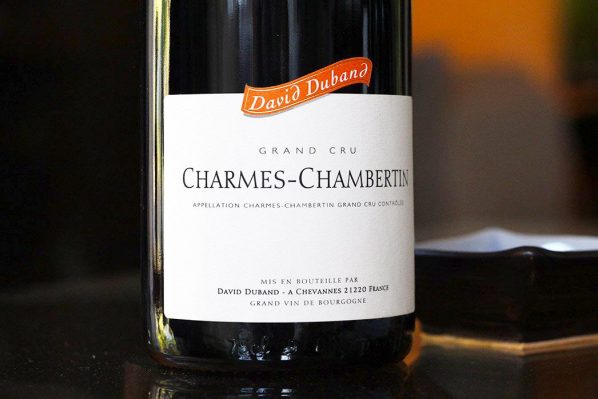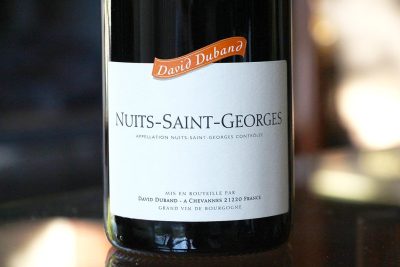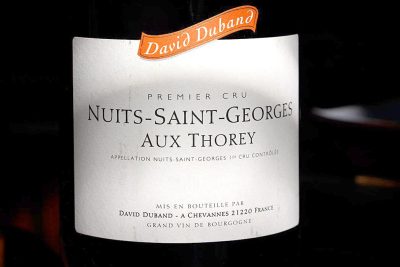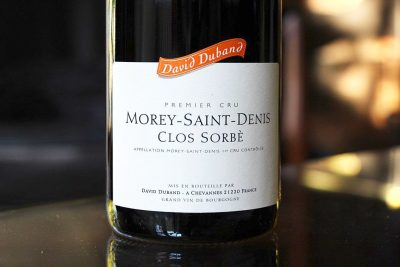David Duband

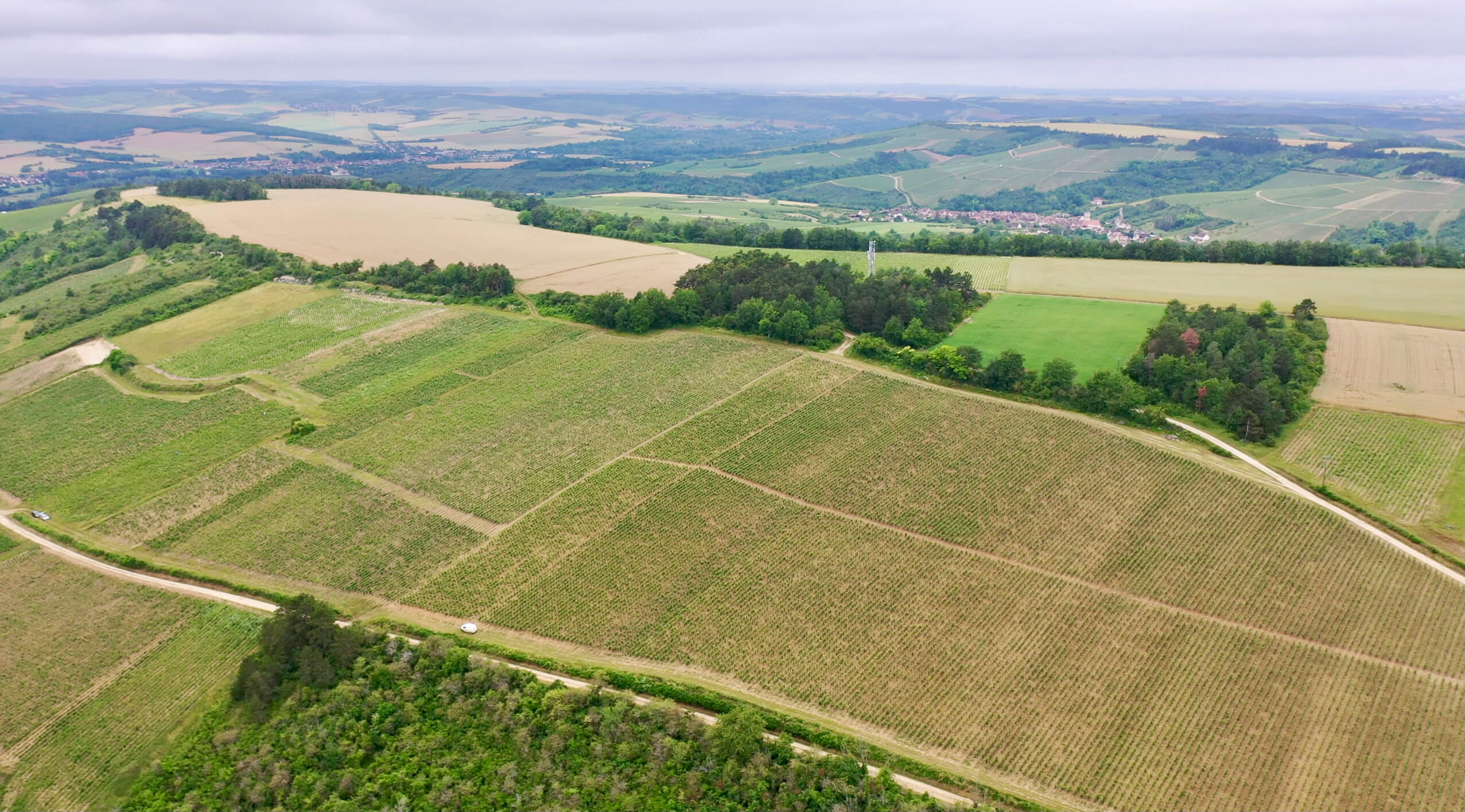
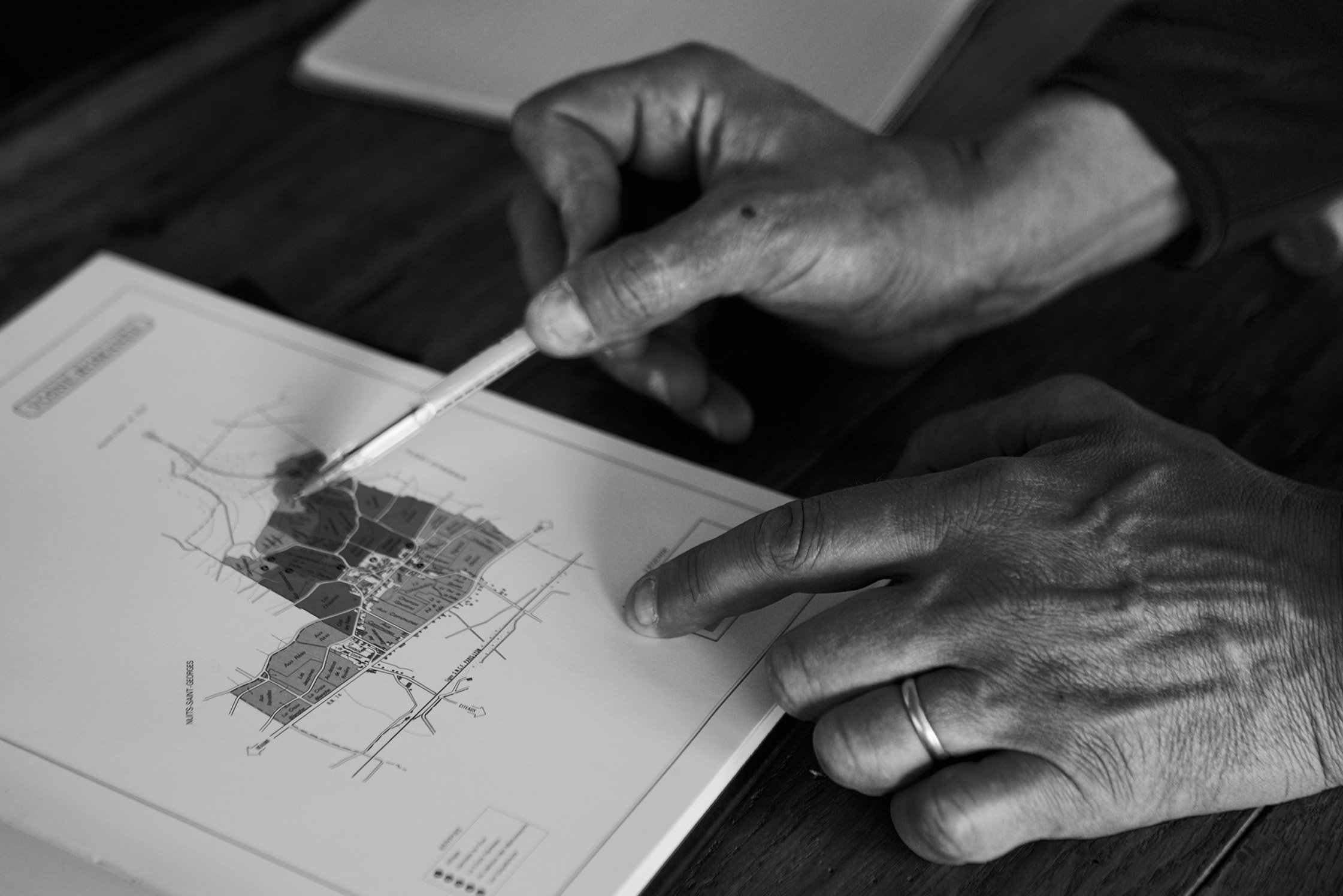
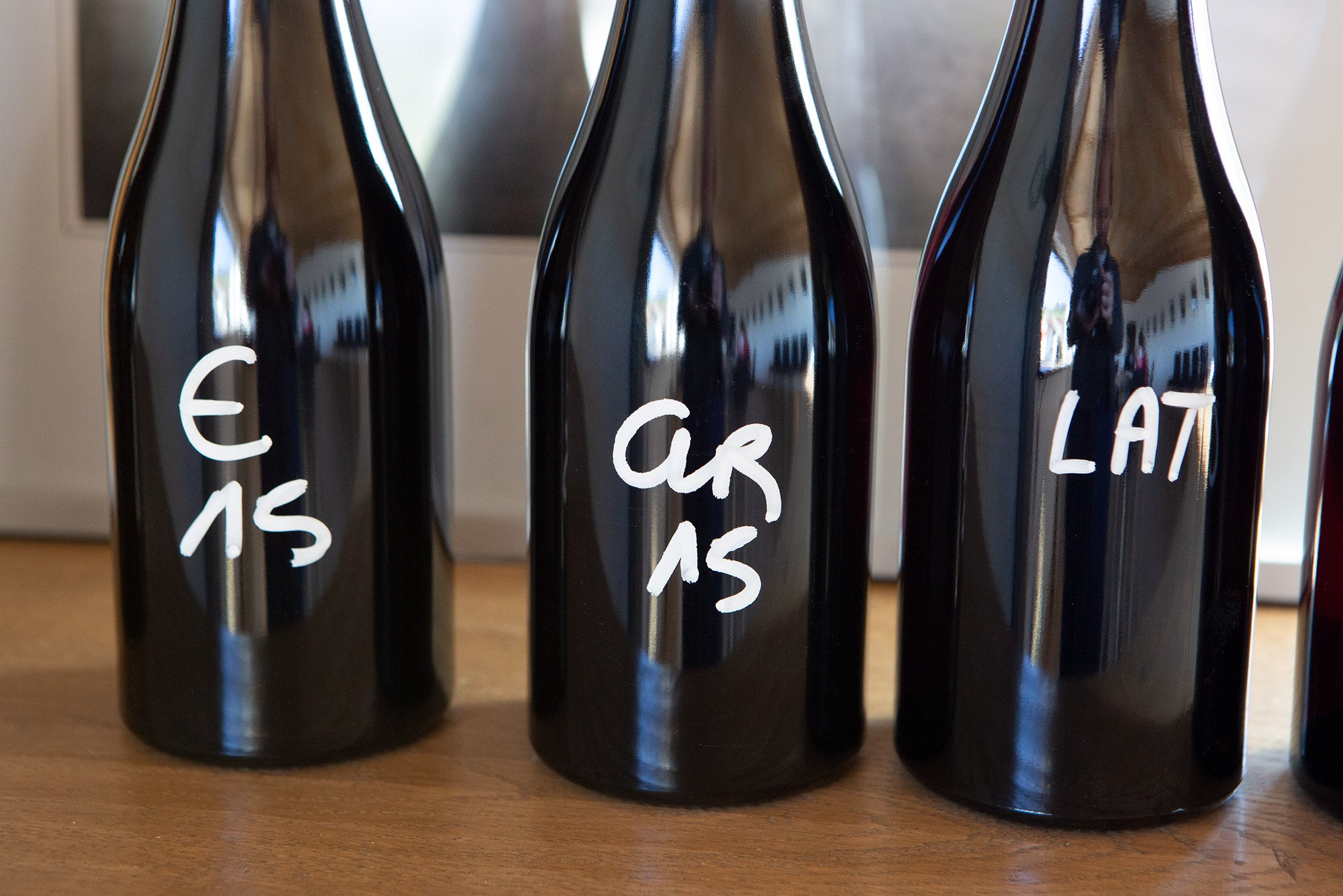
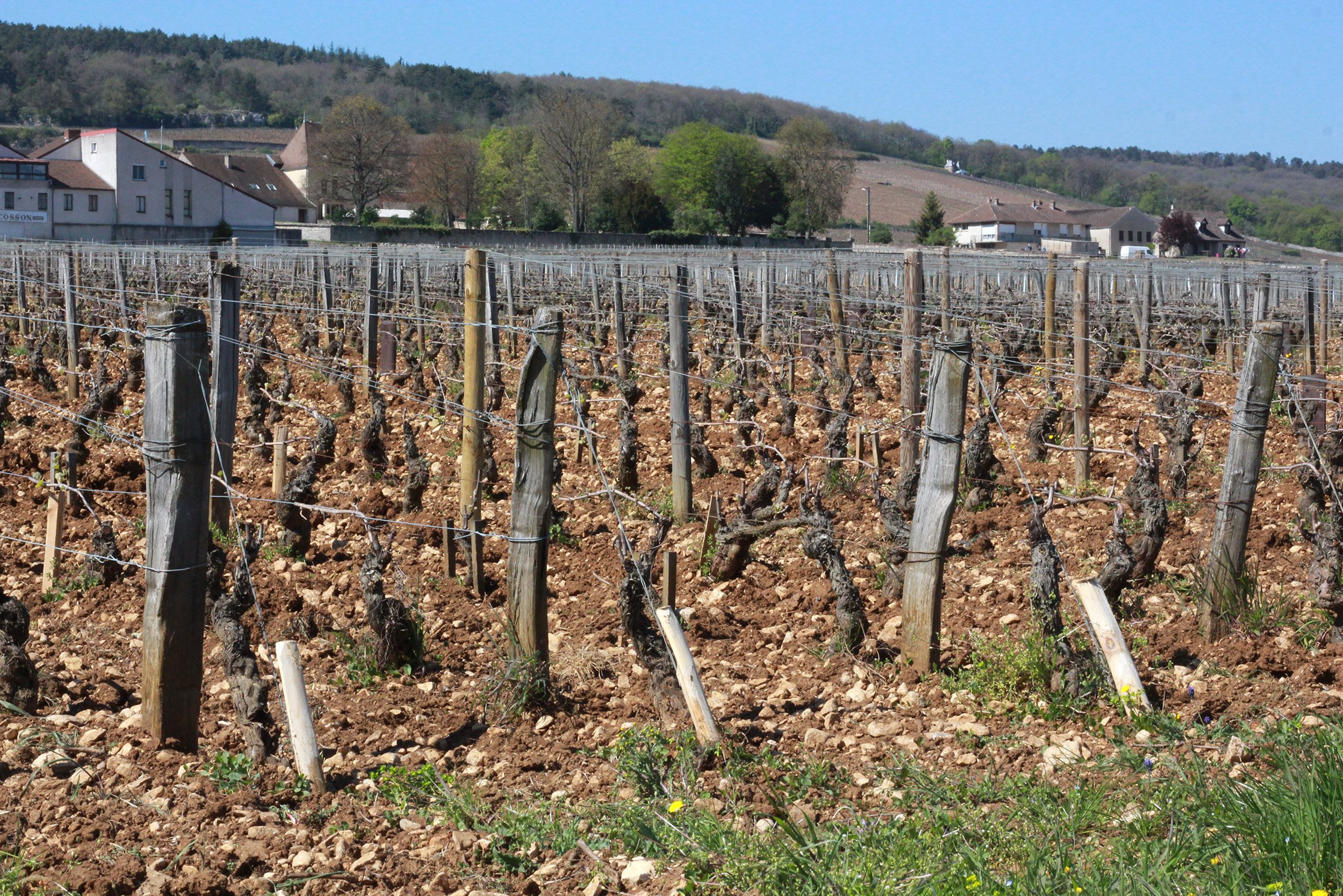
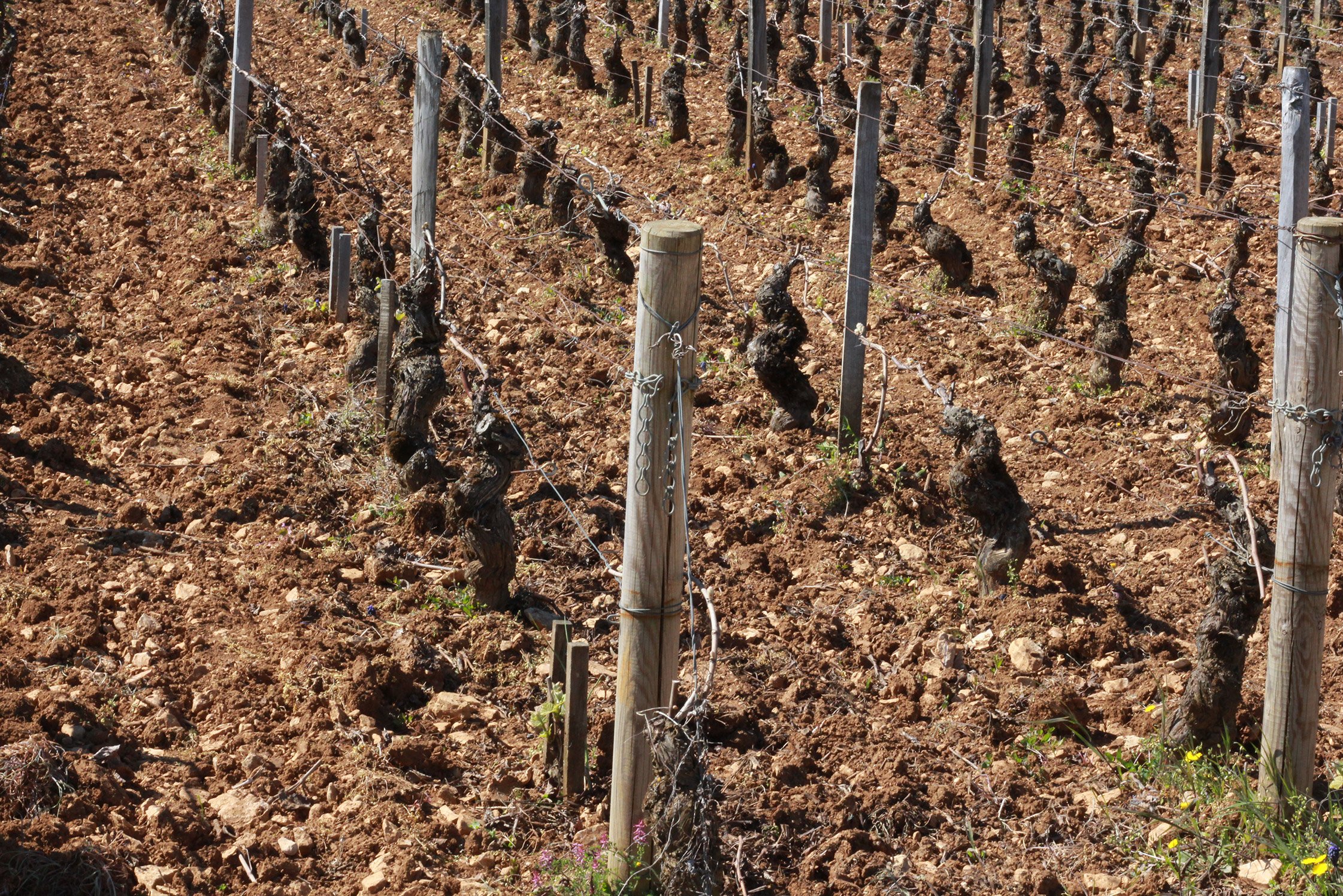

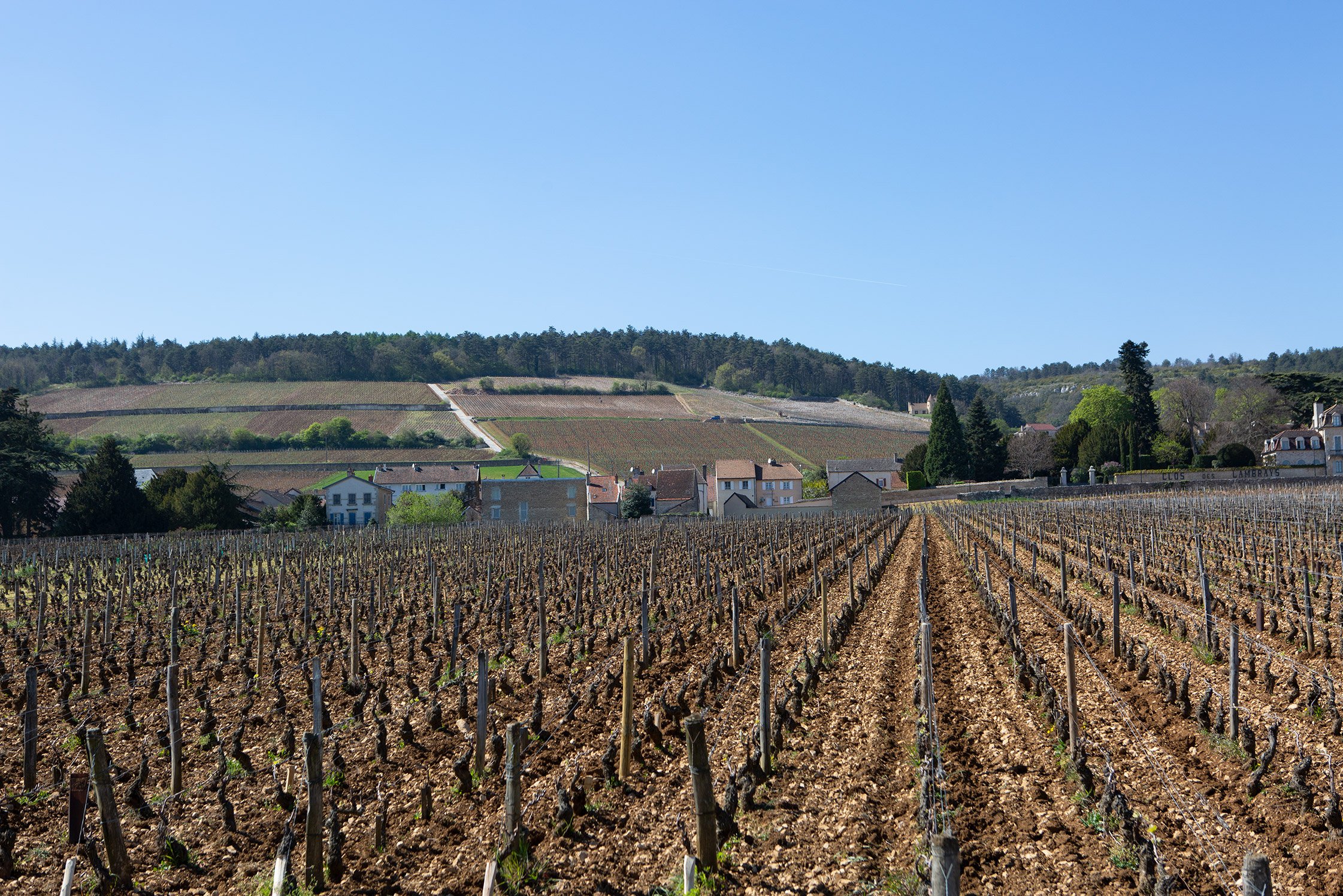

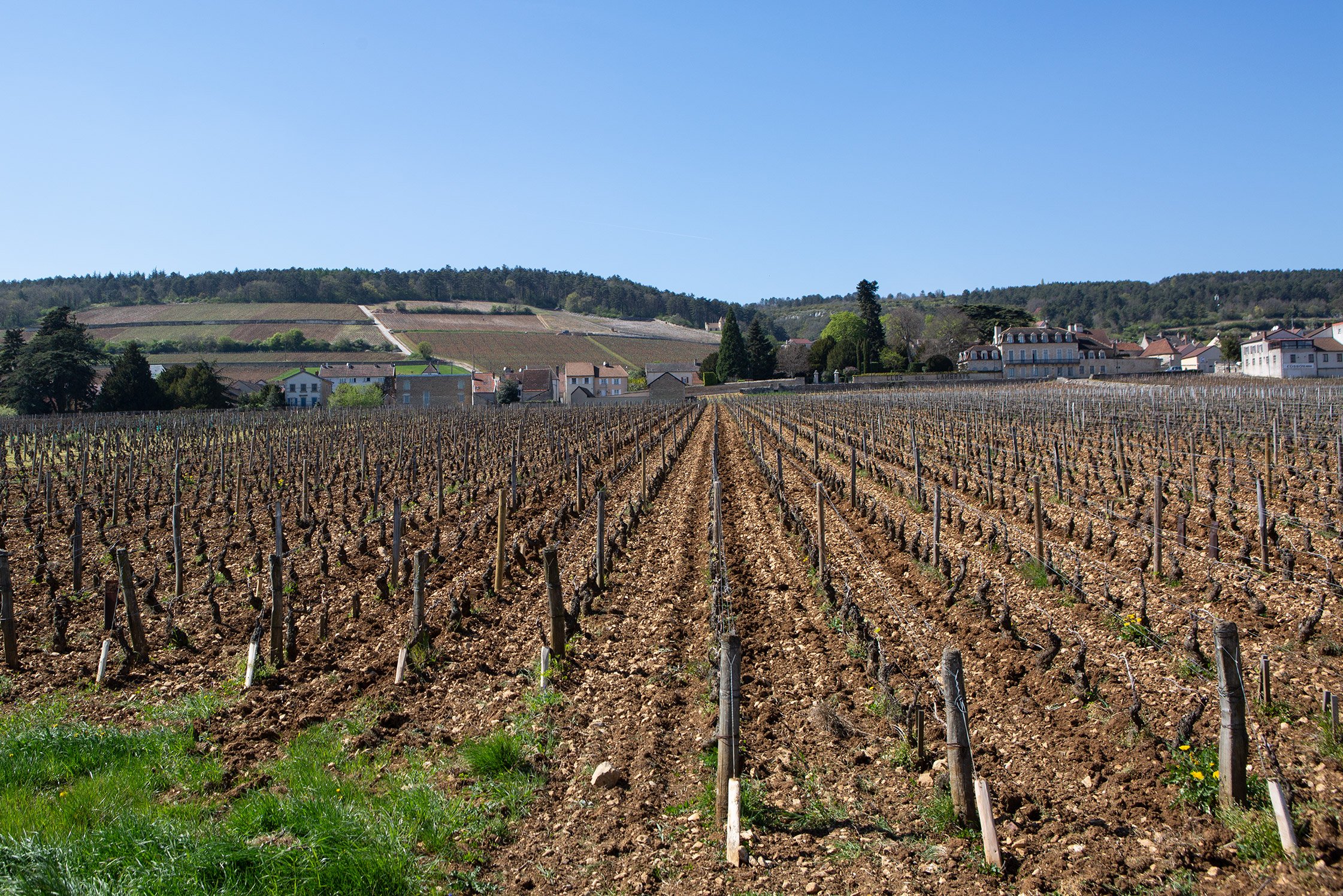
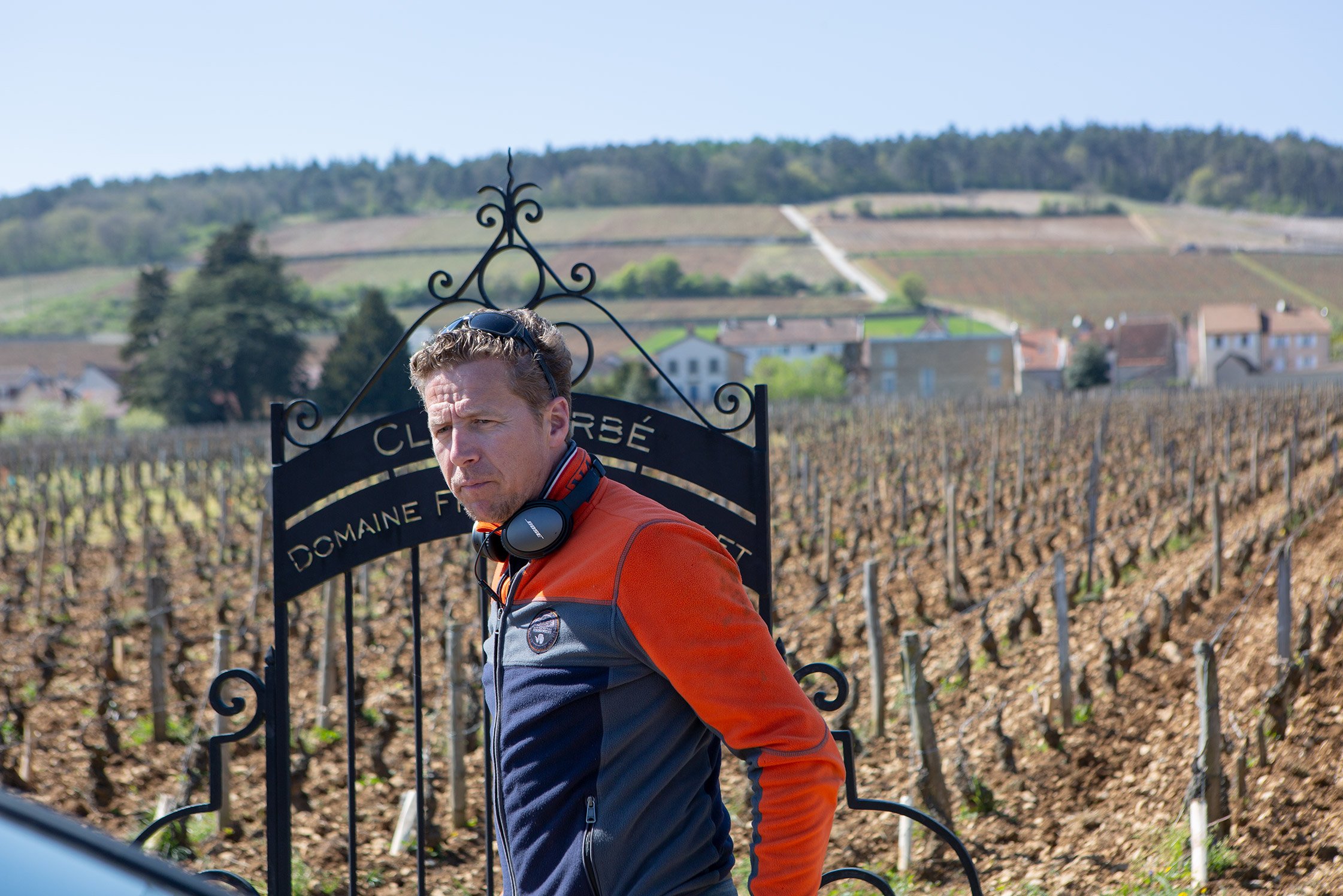
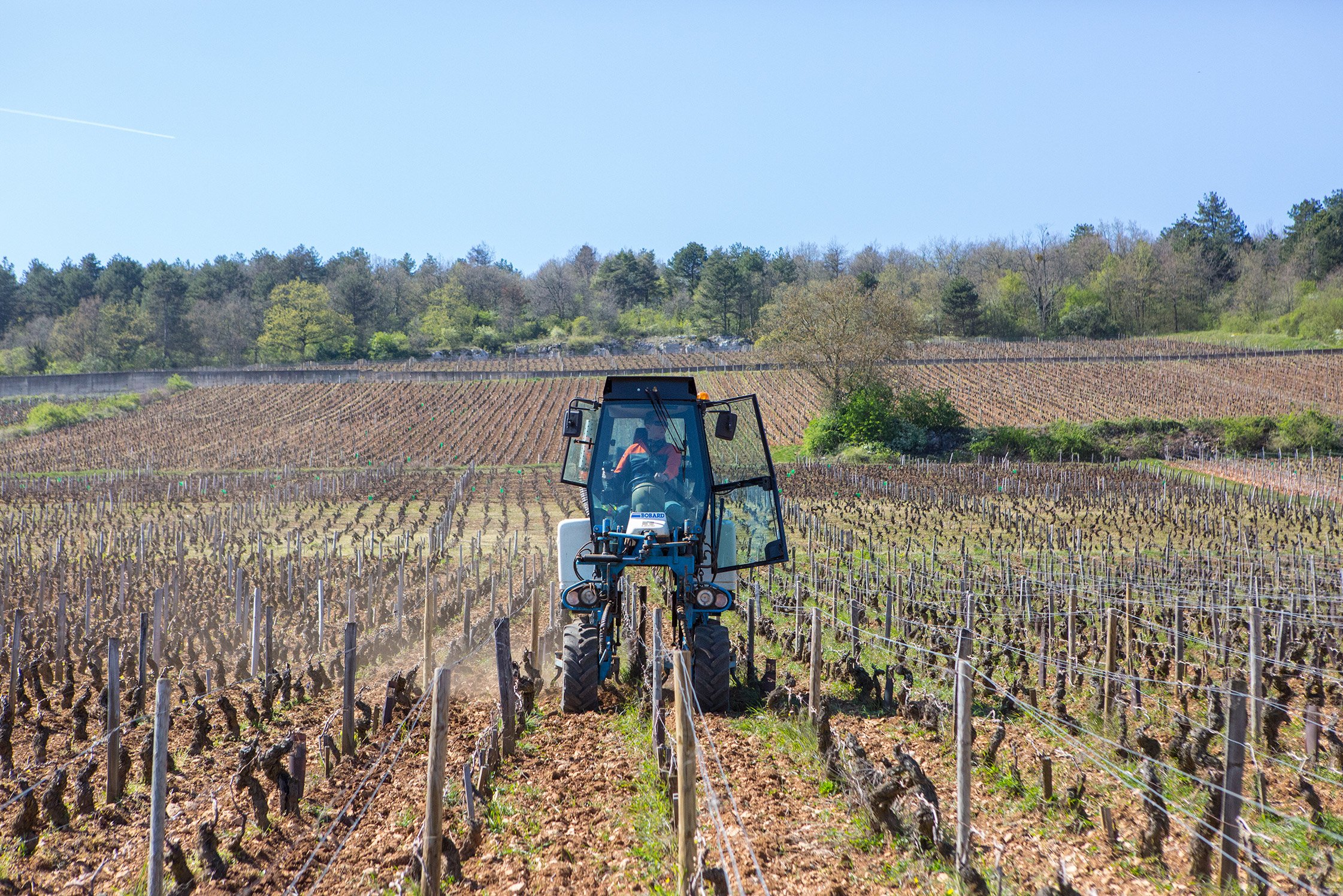
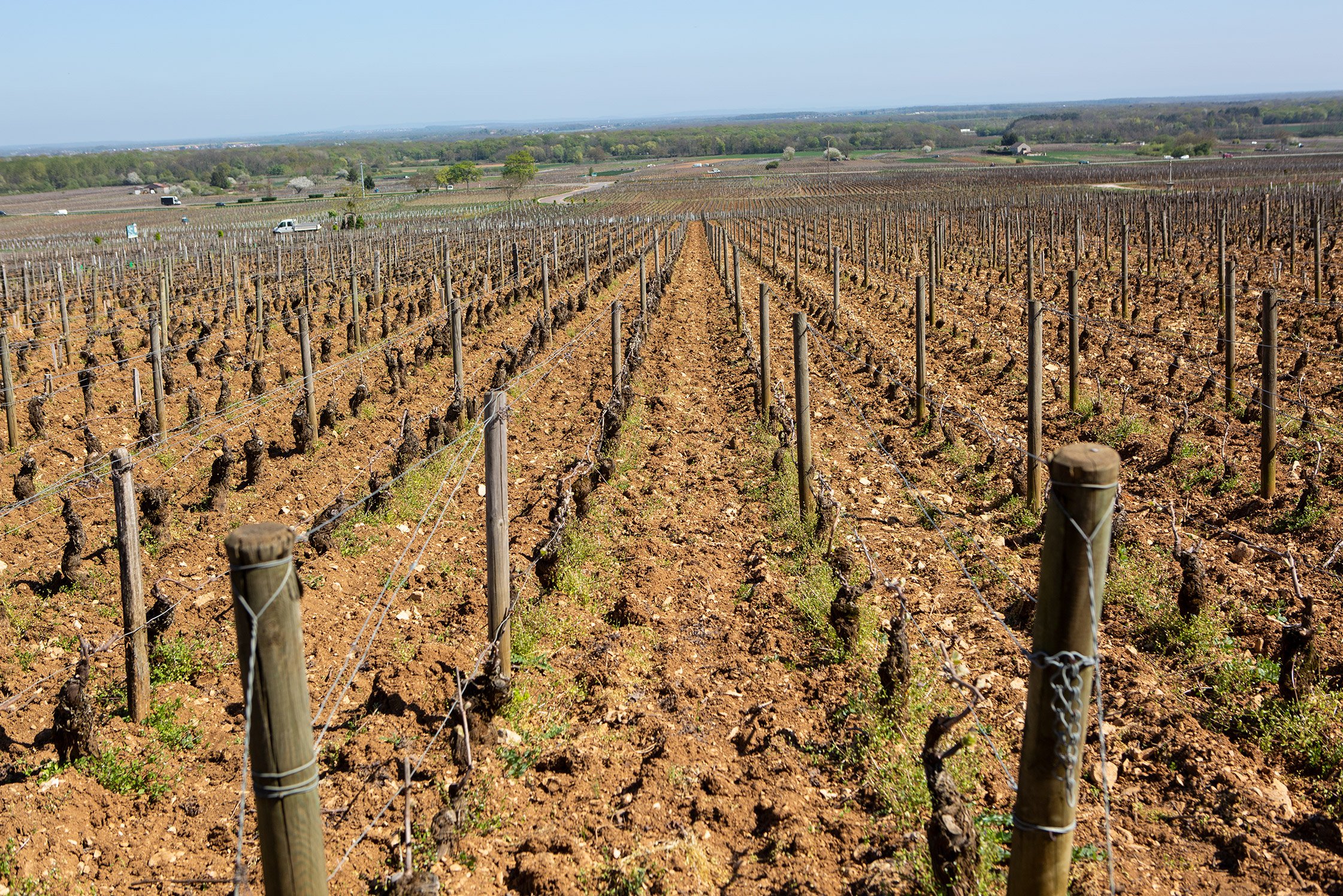
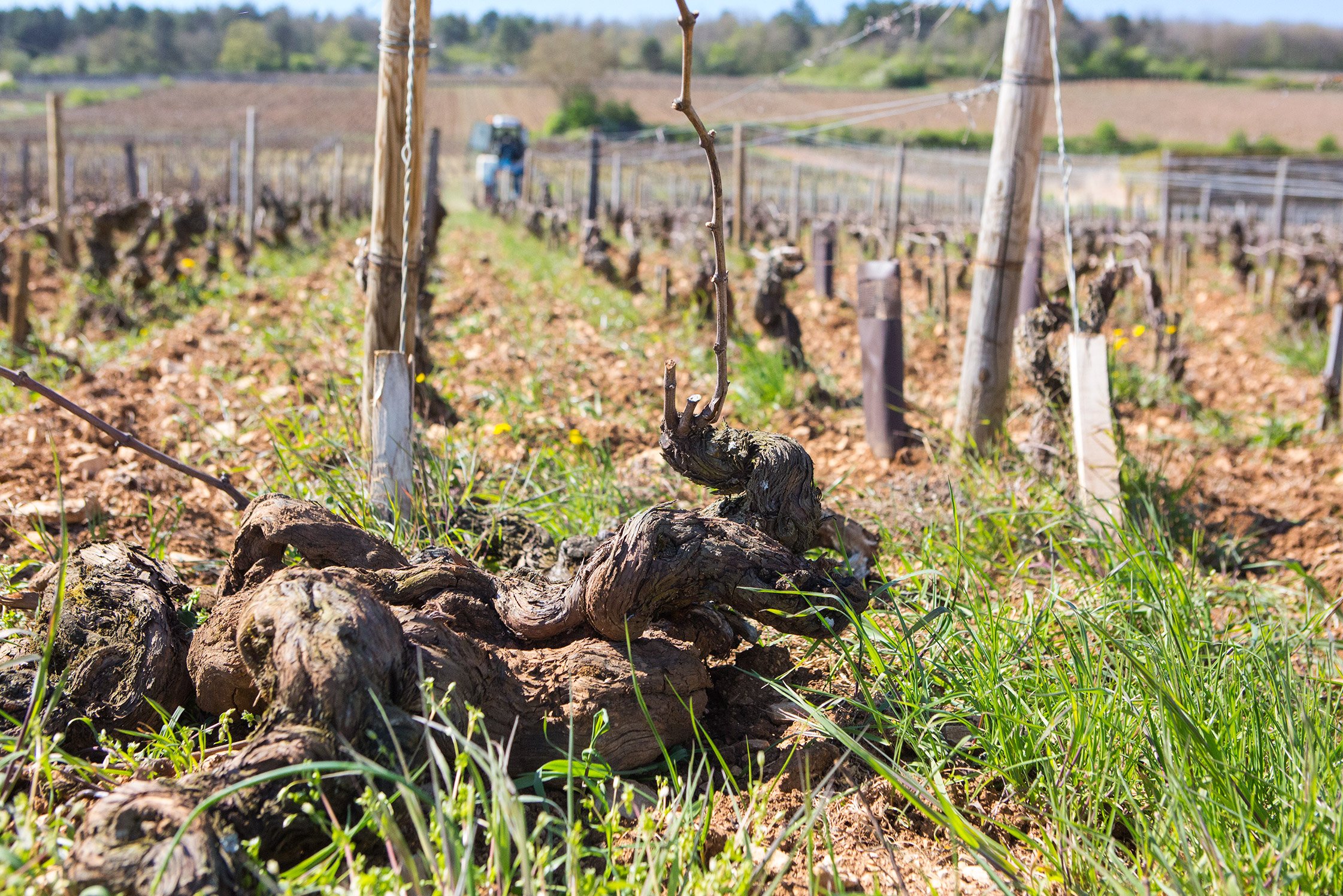
Photography and writing by Ted Vance.
Related material
The quality of David Duband’s wines has steadily advanced since he took over his family’s domaine in 1991. In 1999 he began the move away from conventional farming and achieved organic certification in 2006. In 2005, his friend and business partner, François Feuillet, managed to buy vineyards from Jacky Truchot, which included ideal spots with old-vine parcels in the grand crus, Clos de la Roche and Charmes-Chambertin. Things have gone David’s way, but he is not one to be complacent.
Sometimes it’s not big fundamental changes that set the world on fire, but rather steadfast evolution, one small step at a time. David’s 2008 vintage marked a significant shift in direction. A light in his wines became brighter, and many took notice. David would likely attribute it to his newly found interest in including stems, and a more gentle approach with extractions during fermentation and overall handling of the wine in the cellar.
After tasting David’s 2008s we began to work together starting with the 2009s. Each year since then the wines continue to shed unnecessary elements and became less corpulent and more graceful. The minute details between two vineyards can sometimes be only five to six more centimeters of topsoil before the bedrock, a little less clay here a little more rock there, or only a slight change in aspect. These differences while seemingly small can now be felt earlier in his wines. They continue to be more subtle and precise, and articulate a more intimate engagement with their terroirs.
To fully appreciate the range of David’s wines over the last decade, one needs to read between the lines—such is the case with most compelling wine. I’ve heard it said that his soft and systematic approach leads to wines are not so different from each other. However, the differences from one parcel to the next often exist in the realm of subtlety, especially in Burgundy, where there are many more similarities in bedrock, topsoil, and sun exposure than there are differences between vineyards, or appellations.
While some growers work each terroir differently in the cellar, there are others who craft their range with the same approach throughout vinification and cellar aging for their Bourgogne wines all the way up to their grand crus, save a few minor adjustments like stem quantities, oak, etc.
This kind of observation and focus on fewer elements of a particular subject is similar to how artists study the ways that light and atmospheric conditions can change so much of a composition but not the subject itself. Take Monet’s Waterloo Bridge series of more than forty compositions, and Rouen Cathedral, with more than thirty, both rendered from the same respective vantage points. Painters use canvas and paint; David’s medium is limestone, clay, grapes, and oak. His wines transparently demonstrate the slightest differences in each terroir’s shade and contour, further revealing each unique nuance of the year and terroir.
All the details of David’s winemaking approach and each wine are covered on each product page.
Lay of the Land
Most wine Francophiles are familiar with Burgundy. It’s divided into a few major areas, starting from Chablis in the north with the Côte d’Or, Côte Chalonnaise and Mâconnais in the middle and Beaujolais to the south, just above France’s second largest city, Lyon. The grapes are principally Pinot Noir and Chardonnay on Jurassic limestone bedrock (pretty much all the vineyard bedrock between Chablis to the Mâconnais is from this same general geological period), and Beaujolais’ red grape, Gamay, where the soils are largely derived from granite and metamorphic bedrock from the ancient formations in France’s Massif Central.
Duband’s vineyards are all located in or just west of the Côte d’Or’s northern sub-zone, the Côte de Nuits—almost exclusively Pinot Noir country. He maintains a stellar collection of entry-level wines, village wines from all the major communes from Gevrey-Chambertin to Nuits-Saint-Georges, and premier crus in Chambolle-Musigny, Morey-Saint-Denis and Nuits-Saint-Georges. For grand crus, there are six.
There’s so much written about Burgundy, with special attention to the Côte d’Or, that it seems redundant to have yet another lengthy explanation of the big picture, and futile to get caught up in all the specifics for every given territory. It’s from regions that are rarely written about where we will make the extra effort to bring forth details that are difficult to find outside of books.
For more extensive and general information on Burgundy, we suggest exploring the many thorough accounts from authors like Jasper Morris, Remington Norman and Clive Coates. Plus, there’s an immense amount of coverage from critics who uproot new and interesting details with each new publication. Some notables include Burghound, A View from the Cellar, Winehog, and Vinous. Also, one shouldn’t miss out on Becky Wasserman’s website www.beckywasserman.com for a lot of in-depth content, and the website www.bourgogne-wines.com, where a good collection of videos and free downloadable vineyard maps are available, along with general overview content for each area.[cm_tooltip_parse] -TV [/cm_tooltip_parse]
David Duband - 2021 Charmes-Chambertin, Grand Cru
Out of stock
INFORMATION DISCLAIMER
Information Disclaimer
“Any fool can know. The point is to understand.” – Albert Einstein
On the Details
The details included on our website are meant to serve as general notes and don’t precisely represent all the infinite details that go into the crafting of a wine and how it will ultimately develop over time. The majority of the people we represent in our wine portfolio grow their own grapes and make their own wines, but they don’t open a recipe book and follow it no matter what the season presents. Deeply committed winegrowers evolve and embrace constant change because no season is the same as another; they use intuition and intimate knowledge of their vineyards, past vintages and the growing season to make thoughtful and often spontaneous adjustments that suit each year.
Many times I’ve heard winegrowers and winemakers give different explanations or specific details about the same wine on separate occasions; even for them it’s difficult to keep track of all the tiny details from one wine to the next, and year to year. So, which “fact” should we present and how do we pinpoint such a thing when it’s a constantly moving target?
The reality is that we are simply unable to cover such technical details with true accuracy. There is too much variation from one parcel to the next, from genetic advantage and health between vines in the same row, vintage-to-vintage, how the winegrower managed certain moments during the growing season (like pruning, canopy management, cluster selection, etc.), treatments and the dates they were implemented along with how much of each type they sprayed at what precise moment and why, or how much they added of something to the wine (such as sulfites), and all the other off-the-cuff decisions made during the wine’s creation.
On Tasting Notes
How does a wine taste one day after it was bottled, or two months, a year, ten years, or glass by glass and taste by taste? A taste of wine is merely a snapshot in time from that specific bottle which has been influenced differently in one way or the other either by temperature changes, travel, the cork, the glassware it’s served in, how long it’s been open and how we serve it. Was the glass topped up while descriptions were being written, thereby changing the expression of the previous two ounces and rendering those descriptions suddenly less relevant in the mind of the taster? The same might be asked as to whether it was decanted before analysis; both change a wine’s expression and not in a small way for those with a highly tuned palate. What if the taster was tasting on an empty stomach? Or during a meal? Or after eating? All of these contexts elicit various reactions to wine, including a different set of chemical reactions in our mouths.
What if the taster was in a particular mood when they analyzed a wine that everyone seemed to love and they can’t figure out why they don’t feel the same? What was the weather like the day it was tasted, drank, assessed or judged? For those who follow the Biodynamic calendar, was it a root, leaf, flower or fruit day, and did it change when the clock struck 3:00pm from a fruit day to leaf day and did this really impact the wine or did they just think it did because Maria Thun’s Biodynamic calendar suggested it would? Did they find that the wine tasted unexpectedly fruity which was strange because it was a leaf day? Did they taste only the first, middle or last parts of a bottle? Everyone who knows anything about a good wine knows that its least profound moment (although still good) is when the cork is first pulled, and the most inspiring during the last sips. Wine is alive and full of change and so are we; so was it the wine that changed, or the taster?
It’s impossible to present every detail accurately, to tell the full psychoanalytical story of a single vintage, lot, bottle, glass or taste. And once we have all the details, what will we do with them? Yet I understand the desire to get all the answers as the means and method in which to connect the dots of contemplation, study and enjoyment created by our life experiences through wine. The meaning of life can be glimpsed through its nuances, as it can through many other things.
The best I can do is share what I’ve observed along with what the winegrowers or other tasters have also noted. The wines we represent show a range of moments from their gestation in the cellar to the time they were a few months old, all the way up until the day they developed into adolescents with all their potential laid bare. I will attempt to bring to light a wine’s consistencies through many bottles in different settings and moments, starting from the first tastes out of barrel in raw and unfinished form. It’s not possible to satisfy every curiosity, but I hope that I can furnish compelling observations to think on and which might serve to lead us further down the rabbit hole we all keep going down together.
-Ted VanceTerroir: The vines planted here in the 1920s give this wine tremendous depth, which can only be revealed with time in the glass and more importantly time in the cellar. This comes from the grand cru, Mazoyeres-Chambertin, a vineyard that can be named on the label as Charmes-Chambertin. Mazoyeres is different than most wines labeled as Charmes-Chambertin as the vineyard has a geological and climactic difference. It lies in the path of the Combe Grisard, which brings more cool air and soils that are more stony and deep than the wine coming from the original Charmes-Chambertin located just to the north.
Terroir
The ubiquity of the word “terroir” in wine nomenclature renders this category the most obvious. It’s the goal in this snapshot to bring to light some (but not all) of the details that influence a wine’s characteristics. Not every terroir description within our range of technical sheets will have the same information—how boring if it was all the same—and throughout our collection it’s our hope that there is information that stimulates new avenues of thought.
The general climate and overview of the region and how it relates to other parts of the wine world is addressed on the website above the bottle photo of the wine page you are on, and within each producer’s profile page.
-Ted Vance
Vinification: Stems are included in all Duband wines (average: 30-40% for entry-level, 70-80% on Village/1er Cru, 80-100% Grand Cru). A small dose of SO2 (7ppm) is made at crush and pigeage (punchdowns) is made by foot to not break stems and begins after fermentation starts—5 to 7 total throughout the fermentation. Remontage (pump over) is only used if there is H2S (reductive elements), which is very common in organic wines. The fermentation is usually 17-18 days, then pressed and settled in tanks for 2-3 weeks to allow for whole cluster ferments to settle more clearly—destemmed ferments clarify quicker. Racked for the first time before the end of the year.
Vinification
This is the kind of information one would typically expect to find on a tech sheet. Each detail included on ours is based on the general practice in the cellar with more of a macro overview and not the quantum mechanics of each wine. There are some details included that may not seem consequential, but we’ve included them because we believe they are important when considering some intricacies of a wine and its potential stability.
Details like sulfite addition and its timing get into the many endless rabbit holes you can go down since there’s so much to say about them. Some of the more obvious implications (at least to the experienced wine professional) include whether whole clusters are fully or partially used in red wine, or not at all; fermentation times, which is not a perfect assessment here, because there is always a variation of days from one vintage to the next; the amount of extractions per day/week/total and how the producers extracts (rack and return, pumpovers, punchdowns, pushdowns by hand, or infusion—all have varying levels of extraction), a very important detail during the process which can ultimately influence to a great degree the color, tannin, weight and other elements within a wine’s final characteristics; fermentation temperatures, which can ultimately focus a wine in one direction or the other—for example, low fermentation temperatures tend to bring out the fruitiness of a wine, while higher temperatures bring to the forefront early in the wine’s life more secondary and tertiary qualities. The list seems infinite, but what I include is deliberate and not meant to be routine in its implication.
-Ted Vance
Aging: Aged 14 months in 225l barrels (50% old wood on Grand Cru, 60-70% old wood on all others), racked to steel tanks 2 months before bottling. No fining or filtration.
Aging
The cellar aging is one of the more obvious inclusions in this information detail. I won’t go into too many specifics about the consequences of each choice such as aging vessel types and the length of time within them; it would require writing an entire book on the subject since there is much to consider.
The information in this section includes details that begin from about the time the wine has finished its primary (alcohol) fermentation and/or secondary (malolactic) fermentation to the moment it’s put into the bottle, including whether the wine has been fined and/or filtered.
-Ted Vance
Observations
This area of our product description has nothing to do with technical information but rather a subjective look into the wine in its earliest stages from when we’ve tasted it in vat and discussed its tendencies with the winegrower, to tasting the wines shortly after bottling and perhaps some years after the vintage date. In any case, it’s imperative to take note that these assessments are largely based on young wines and not specifically what they may become with plenty of time in the cellar. It’s also important to note that the information in this section is not vintage specific.
Many of a wine’s youthful characteristics may hold up to some degree over time, but there are too many potential scenarios for each (and every individual bottle and taste from a particular bottle as it opens up in the glass, and many other factors, like our mood or the weather—see our sort of disclaimer here) to change in unexpected ways. When one considers a wine’s natural balance in certain vintages, how it was crafted, how much sulfur was added and how it was handled after bottling makes it difficult to know where it’s headed after its first couple of years; some wines in their youth are vigorous but can quickly fall flat. There are techniques deliberately employed to give a forceful display of pleasure and intrigue when young, but are not equipped to stand the test of time with that seductive youthful energy fully intact. On the other side, many wines are not extroverted in their early years but blossom into a glorious artistic interpretation that remains true to its terroir and can give goosebumps, or inexplicably bring us back in time to smells from our childhood. Our categorization of each wine is not made by a single taste of a specific vintage but an assessment of what we have noticed, or what other tasters and especially the winegrowers, have contributed to our experience with the wine; who knows the wine better than the one who raised if from bud break to bottle and has analysed every nuance and tendency and the conditions in the vineyard and cellar as it evolved?
As much as anything in this section, I’ve attempted to add a few more dimensions (at risk of being too abstract and/or personal) to the shape of the wine. There are more common descriptors like Acidity, Tannin and Body, all of which are important and more easily understood, but they leave too many supporting dimensions like Finish, Intensity, Core and Texture that bring the wine out of a one or two dimensional view and into 3D.
A range of descriptors for each of these categories could go on forever and there are many creative words that may be more apt than what was chosen. That said, I’ve decided to at least keep the range within each category simple.
There are largely only three words, and sometimes four, that separate each with a dash between them. Some wines exist all the way to one side of this simplified range and are bolded only where it seems to fit in. Others have two, or rarely all three bolded, and I hope that the implication is obvious that when there are numerous descriptions bolded that the wine seems to fit in a more broad range, or somewhere in-between the two words.
The most important thing to consider is that the wines are calibrated to my palate and it’s likely to not be consistent with yours. However, my goal is to at least be consistent so when you taste a wine categorized as having a dense core, instead of a lithe one, or an electric intensity instead of subtle, you at least have an understanding of what it may be like be on one side of the spectrum instead of the other. In this way you can theorize to some degree what some different dimensions of a wine may be like if you’re familiar with some wines we work with already that have been assessed.General Impressions
This section is a collection of broad descriptions that are likely to be consistent characteristics when the wine is young, regardless of the vintage. (Please note that none of this information is vintage specific.) Certain vineyards or bottlings made by the same hands each year carry some level of consistency and typicity and this is what these words attempt to capture. There are many more subtle or powerful nuances that change from year to year and taste to taste that evolve over the years, and I make no attempt to do the impossible of describing what exactly you should taste or interpret. One of the great pleasures in wine is to find your own interpretation of it; there could be some precise lemon character, like lemon curd, preserved lemon, fresh lemon, lime, lime skin, lime or lemon leaf, etc, but I may simply leave it at “citrus” and let you sort it out. While it’s not laid out with tantalizing poetry and prose, these descriptors are meant to offer a starting point if you don’t yet know the wine.
-Ted Vance
Mineral Impressions
I debated whether to use the word “mineral” in our information sheets due to the controversy surrounding its use within the scientific community. We understand that it’s not exact and directly related to minerals, but it’s a common language of our time used to communicate certain elements we can agree (or not agree) give some kind of impression to the wine. It’s hard to choose what to put in and what to leave out, but words were selected that were reasonably far enough apart in the spectrum. By no means am I satisfied with these words, but for the moment they will have to suffice.
Starting with salt, I chose two separations for this because not all salt impressions are the same, at least for me. Some are lighter ocean spray-like, ethereal marine nuances, which I’ve categorized as “Lightly Salty.” Other wines may have a deeper and coarser saltiness to them, like salt dug out of a mine rather than harvested from the ocean or sea, or the salty quality on a wood grilled steak when you crunch a chunk of salt that was just sprinkled on it. In any case, whether it’s agreeable to have two separate salt categories or not, some wines have more than one. For example it might have ocean spray in the nose and deep coarse salt sensation in the palate; in this case, I’ve chosen to list both.
Metal is a reference to exactly that character on the palate and nose. For me it’s different from mineral and just as common but often lumped into the mineral category. Perhaps the use of the word “metal” when describing a wine may imply a negative connotation, but I think that would be an unfair characterization. The origin of these smells in wine is not completely known and whether or not it’s possible to detect them, it’s still an impression you may have when smelling wine.
Mineral is broad and likely to be selected in almost all wines (at least that we import) because most of them exhibit some kind of indescribable mineral impression. That said, I didn’t want to leave it out because it can mean so many things that don’t match up to the other eight words in the category.
Wet stone, graphite and flint have also been given their own space because they seem to be some of the most commonly shared and understood descriptions in the wine community within the category of mineral-like characteristics. One thing to note is that flint is not reserved for wines grown in this soil type (flint, silex, chert) because the impression can show up in wines from all over the place.
I included the descriptor, Reductive, in this mix because there are many associations and a strong interplay between reductive elements in wine and what is perceived and categorized as a mineral-like nuance. It’s my personal opinion that reductive elements should be described as such, and not mineral ones, despite the choice to still leave it in the Mineral Impressions category. From a scientific standpoint, reduction is correctable and/or avoidable, therefore it seems more like the fool’s gold faux-mineral, but can bring a nice level of complexity to a wine when well balanced. However, at its worst it can be used as a dishonest trick of the wine trade; an imposter standing in front of a wine’s terroir, whether it be a strong terroir or a weak one.
Petrol is a specific diesel/gas nuance often found in white wines, like aged Riesling, Albariño and/or Vermentino. Indeed there are many more than those and it’s not so common but absolutely deserves its own spot on the list.
-Ted Vance
Ageability
Often there are many of these categories that are bolded together and this is simply to say that the wine is likely to be a great drink at many moments in its evolution and may also have a track record of proof. When is the optimal moment for a wine is up to the taster; not everyone likes aged wines nor does everyone like young wines, so to each their own! I’ve simply attempted to give a clue based on whether the wine was built for the long, medium or short haul. When Unknown is selected, it’s an indicator that while I love the wine (otherwise we wouldn’t import it!) I have no experience with it other than it tasted great young and I don’t know much more than that.
-Ted Vance
Technical Precision
The three categories chosen represent an oversimplified grouping (like most of the details included) of each producer based on their general approach to wine. There is not one category that is better than another, they’re simply different.
The inspiration to use these words to classify the polar opposites of one’s approach to wine comes from the centuries old debate of nature versus nurture. Without completely attempting to breakdown and rebuild the concept, I suppose if we consider the parallel of parenting children, this may (or may not) be an easy way to understand the idea.
Most of us know the helicopter parent who must always be in control and overprotective to make sure their child doesn’t get hurt by something around them, or enjoy a piece food they happened to pick up off the ground and put in their mouth. This parent (the nurturer) also has a plan and intends to execute it with accuracy and little room for negotiation while employing as much knowledge to ameliorate any risk around any conceivable corner and to protect their child even to the point of potentially suppressing their true personality.
The naturalist (listed under the category naturer) is the opposite. They see their child grab the food off the floor and watch to see what happens knowing it won’t hurt them if they taste it and wait to see whether they like it before stepping in to stop them from grabbing the next morsel. They’re likely to give the children the opportunity to figure it out for themself and allow nature a stronger say in the development of the child, or for our purposes, the wine. These are the winegrowers who embrace random developments in the name of discovery, and sometimes they are willing to push the limits and let the wines take on undesirable characteristics in order to open up the possibility to uncover something pure and honest. In this case maybe the flaws are understood but left alone because if the treatment of it means destroying the terroir or something unusually curious, they may not want to move to correct the wine in the cellar. Sometimes the risk is well calculated and the wines bounce back, other times they don’t, but at least it’s just wine and not a kid.
We work with a band of winemakers who march to the beat of their own drum. Some are on the opposite sides of the spectrum, but most play somewhere in-between. We have no problem embracing the full monty naturalist or the overprotective nurturer, but we have our limits on both ends.
-Ted Vance
Intensity
The Intensity category is the one that sets the tone for the energy of the wine and is usually felt in the first taste once the wine is uncorked. It’s one of my favorite abstractions, next to Core, Texture and Finish. Every compelling wine fits somewhere between subtle, vigorous and electric, and none of these terms are at all an indicator of the quality of the wine. Like the Core, Acidity and Texture categories, this is meant to be a physical sensation or perception and not a measurable or quantifiable attribute, like the actual acidity of a wine. (See the Acidity explanation for more on that.)
Some wines are analog frequencies, soul surfers hanging ten off a longboard in the moonlight of a nighttime ride slowly taking in the beauty of the moment. Others are edgy digital frequencies, energizing and exciting and bring a forceful physical reaction, like watching Neil Young destroy it on stage with one of his freight train-like songs ended by long guitar riffs with loads of feedback followed by the destruction of his guitar. Within the Vigorous zone are the vast majority of the wines in the world and you can paint your own picture of this broad ranging description.
-Ted Vance
Core:
Core
This is another abstraction I constantly circle around when I enjoy wine. It’s a reference to the perception of the interior strength or density of a wine rather than its superficial power. Like some other categories in our tech sheets it’s not a quantifiable attribute in the chemistry of the wine, but rather a perception or sensation. This dimension may be a direct byproduct of the vineyard site and not easily augmented by the winemaking choices, but rather those made in the vineyard (like lower or higher yields), or the vineyard’s built-in characteristics that either come from the soil or the genetic material. Some wines are wonderfully lithe, like an otherworldly, magical mineral water and can be drunk easily without drawing too much attention to its inner core power. Others are dense in their center, like two bottles crammed into one.
It’s indeed related to the wine’s texture, weight and body, but think of comparing the strength and appearance of a bodybuilder to a professional rock climber. The bodybuilder has weight, muscle mass and great strength, but likely not the same kind of proportionate strength as the rock climber. Professional climbers may be smaller but they have a steady power and immense core strength, and hands with tendons like steel cables a vise-grip handshake that could match (or likely be stronger) that of a bodybuilder considerably larger.
-Ted Vance
Acidity
This is a pretty easy category to understand, but it’s important to not confuse the observation of how the wine appears to express its acidity with its measurable acidity. It’s not uncommon that a wine with a lower measurable acidity can taste more acidic than a wine with a higher one. This unexpected subjective quality (because we are not using literal chemistry measurements to categorize the acidity of the wine) is usually attributed to the overall balance of a wine and how this particular component is woven into its fabric. The actual measurable acidity may be a small number from the lab report but still stick out and be more noticeable in certain wines. Equally, a wine may boast daunting lab numbers but the acidity is neatly tucked in and acts incognito as a support to help other characteristics in the wine shine.
The first three descriptions in the range of options (Light—Medium—Full) are easy to understand. The fourth descriptor, Electric, is an outlier and represents something in the more extreme realm of wines that is unusually strong in its expression of acidity, or freshness—a common and more gentle description used by the French instead of “acidity.”
To be categorized as Electric is not specifically a mark of higher quality, it’s simply a warning that you may have to prepare yourself for an attack that may or may not be in balance with the rest of the wine, which of course is a matter of opinion; each of us has our own calibration, tolerance and preference.
-Ted Vance
Texture
Texture is one of the great pleasures of wine, but in some cases displeasure when it’s out of balance—usually when it’s excessive. Indeed this is also related to Acidity, Core, Body, Tannin, Wood Presence and Finish, but I’ve given it its own category because not all wines finish on the palate with the same textural feeling. This is more closely related to the phenolic weight and residue of the wine (perhaps some level of influence by the wine’s dry extract) on the tongue and whether it be lithe, medium or dense. However, it’s not specifically pointing to where on the tongue that weight seems to be most pronounced; we’ve taken note of that under the category, Finish.
Like many other categories we’ve included, the range of textures according to our very basic descriptors have nothing to do with a wine’s overall quality. It’s simply an observation without using precise and unique descriptions for each wine to bring to light whether the wine’s texture is a minor or major component in the young wine.
-Ted Vance
Body:
Body
The Body category is somewhat universally understood and can be influenced by so many things, from extraction, natural grape characteristics, yield levels, soil structure, aging and so on. We’re not trying to recreate the wheel with this one and it’s as simple as you may expect. It’s related more to the “flesh” of the wine, and the other broken down components we’ve included—like Core, Texture, Intensity and to a lesser degree Acidity and Tannin—help to round out this generic overarching description of a wine’s body as a singular unit with numerous dimensions.
-Ted Vance
Tannin
As with all other categories, consider that this assessment is based on a young wine and the level of tannin doesn’t imply anything about the overall quality of the wine. It is an observation and one that is not difficult to assess.
Tannin is not a bad word and many times we’ve experienced pushback from buyers (mostly newer wine drinkers) who somehow find tannins off-putting, even when their presence is minor. Tannins are one of the most stable building blocks for wines with aging potential and they are custom fit for specific foods, like meat. The newer population of people who drink metrosexual wine (I include myself here for a good dose of my preferred wines) started to move away from treating wine as food meant to be consumed with lunch or dinner. It now acts as the aperitif, a meal component and an after dinner drink and has thus fallen out of favor because before or after the meal there isn’t much to balance out the tannins. For me it also plays the role of starter and finisher at dinner time, but I like tannin in my wine and so long as it’s in balance with the rest of the components it serves to add to the layers of complexity and understanding of a grape and/or region’s specific characteristics as it relates to its terroir. Tannin is the chest hair of wine and it’s not always sexier when cleanly shaven.
-Ted Vance
Finish
The Finish category is not in line with the typical implication of this word in winespeak. Here it’s focused on where the wine sits heavy and lasts the longest on certain locations of the palate and isn’t about the length of time it stays there.
The motivation for adding this specific element is not a separation of wine quality. For example, there are some wines that have a big frontal impact and not much in the back palate but the wine is replete with deep complexities around every corner. In contrast, some wines hit on all points of the palate but are a bore in all others. This information is simply recorded as an observation which can often be linked back to something within the terroir, often its soil type and structure.
At The Source, we have the fortune of working with some of the most talented wine thinkers, growers, importers, wine buyers, sommeliers and knowledgeable collectors of our time. There is much discussion about what kind of soils potentially influence the resulting wines no matter what sort of tricks or techniques are employed in the vineyard or cellar and one of those elements is the type of bedrock and how it influences the palate presence of a wine.
To borrow from two of our good friends and their book, The Sommelier’s Atlas of Taste, they quote another good friend of ours, Pedro Parra, a specialist in terroir who has also presented to me years ago this same data of his experience analyzing wines grown from specific rock types. I don’t feel compelled to rewrite what Pedro said when they’ve already done it perfectly. One excerpt from the first chapter (one of the most compelling chapters in any wine book) reads:
“Granite, he [Pedro] says, offers a very acidic sensation, with a huge amount of energy/minerality in the front of the mouth. He doesn’t feel much impact on the sides of the tongue. Wines growing in schist also have acidity, he says, but it is felt more in the cheeks. The wines feel bigger—not round, but with more energy than granite felt in the cheeks and sides of the tongue. ‘Schist is always about power,’ he says, ‘a mineral bomb.’ Limestone is easier to identify because of its distinctive short tannins and energy. Limestone wines aren’t round, but go farther down the tongue. They’re elegant, with a fine granularity and subtly tense electricity. Finally, he says, volcanic substrates tend to be a little flat and rustic, lacking in electricity.”
Since meeting Pedro I have observed these aspects on the palate impact of wine and find his ideas to be more true than not. There is always variance, but that is expected considering how many factors can influence a taste of wine and how imperfect the observation likely is when thinking about all the different factors involved. The most compelling reason to include this in our breakdown is to share our observation and to further the conversation by the development of a sort of micro database in which others can compare notes.
-Ted Vance
Wood Presence
Wines aged in some kind of wood vessel, whether it be oak, chestnut, acacia, or driftwood (kidding), can impart some kind of nuance. Sometimes wines can be aged in a high percentage of newer oak but seem like there is almost none there. Also, within the context of a specific set of wine from a certain region, like Burgundy, when tasting a basic Bourgogne Rouge aged in 10% new wood compared to a Village wine, Premier Cru and then Grand Cru from the same domaine with much more new wood can seem like there is no noticeable wood nuance on the Bourgogne wine at all. Take that same Bourgogne wine and compare it to a red wine from another region aged only in stainless or concrete and it begins to seem oaky.
What’s important in order to gauge this category is that we have to be flexible and consider the context of what is typical from a specific region. The 228-liter French oak barrel is the standard aging vessel in Burgundy (although that is beginning to change with more domaines using larger wood vessels, a welcome new approach), and very few wines grown on high quality terroirs are aged in something non-wood related. While in other regions it may be typical for this not to be the case, like Rieslings from Austria or Germany, it would be unfair to categorize the Bourgogne at the same level of oak nuance as a Grand Cru because it seems oaky when compared to German Riesling.
Another consideration with this is that the categories are specifically directed to the detection of new oak, rather than oak in general as a tool used to round out wines. Sometimes wines can take on a barrely note when aged in older wood barrels, but that is not a consideration when we assign a wine into one category or the other.
-Ted Vance
The Vineyard
Soil:
Soil
Every detail counts when it comes to a wine’s vineyard soil. Soil constitution can be divided into a few basic but distinguishing categories that play a role in shaping the wine and some are more significant than others: bedrock type, soil composition (what is that dirt actually made of), depth and grain size (clay, silt, sand, gravel, cobbles and/or boulders). These factors determine soil nutrition and water retentive abilities which influence the shape and taste of a wine. The soil is also one of the reasons specific grapes were chosen; for example, in Austria, Grüner Veltliner thrives better in soils with a high water retentive capacity and easy access to nutrients, while Riesling develops its complexity in poor soils and a much more stressful environment to find its peak expression.
For winegrowers who minimize manipulation in the cellar and vineyards in order to give voice to the terroir the soil becomes paramount. Consequently some consistent patterns emerge from different wine regions around the world grown on similar soil types and experienced tasters often find those links in blind tastings. The connection between soil and wine remains one of the most consistent qualities/traits of a vineyard and its resulting wine despite the influence (or non-influence) of those who crafted it. It’s also one of wine’s great somewhat unsolved mysteries.
-Ted Vance
Farming
The farming section is broken down into four different farming categories that explain in simple terms the way we view the cultivation of grapes.
The first is sustainable farming, an approach with a large interpretation between those who use an endless supply of synthetic treatments in their vineyards and others who only use treatments only if absolutely necessary. We have no interest in working with domaines/brands on the extreme and careless side of conventional farming. The producers we largely represent are vignerons, which is to say that they work in their own vineyards and are in touch with what it needs and doesn’t need, and they craft their wines from the grapes they grow.
Many of our producers categorized under sustainable farming work with organic and biodynamic treatments, however they are not certified because they want the flexibility to do what they feel they need to in order to keep their business healthy, which of course seems perfectly rational. Imagine if you lost your entire income for a year simply because you thought you should adhere a strict dogmatic approach to something in your life. Would you take such a risk when you know it could cost you so dearly, impacting everyone in your family and those who put their faith in you as their employer?
Much of our work as importers is to visit vineyards (after all that’s where good vignerons spend most of their time), not just taste the new wines and quickly move on to the next appointment. As the curator of our portfolio, I have visited the vineyards of every producer in our collection—some every year—to observe whether they are using any kinds of topical treatments, like herbicides or pesticides. The best time to see whether they are being honest about herbicidal treatments is in the spring, and that’s why I usually go then to visit the vineyards. The most difficult treatments to observe with certainty are systemic treatments (those which are not contact treatments, but are taken into the plant’s tissues to resist nature’s challenges), but I’ve always made it a point to ask our growers directly and it doesn’t take but a second to know if they’ve used them before they even say a word.
I’ve had many enlightening conversations and debates with growers and scientists about the use of synthetic treatments in vineyards and it seems there’s no effective way in which to grow grapes and make wine that doesn’t have some level of negative environmental impact, even within natural wine practices. Perhaps to the dismay of us idealists, there are many compelling arguments for the use of certain synthetic treatments in vineyards when compared to the impact imposed by the constraints of organic or biodynamic certification, and it’s a tough argument one way or the other once the research is presented.
I have come to the point where I believe that what is crucial is that the one who crafts the wine works in the vineyards to understand its specific challenges. It’s their experience and knowledge of a plot’s tendencies that gives them the knowledge to measure applications with precision instead of carpet bombing with something that can do more harm than good.
If we look at the organic and biodynamic practices honestly, the treatments seem ideologically correct when we consider what’s better for our bodies, but it’s hard to say that it’s ecologically sound if it’s required to use two to four times as much copper sulfate (a heavy metal that kills microbial life in topsoil and pollutes water systems) and sulfur treatments in the vineyards as a precision, sustainably farmed vineyard. Furthermore, unless these methods are done by hand it's three times as much tractor exhaust, maintenance and vehicle replacement, which contributes to the oil industry through more tires, oil and gas, and to the metal, mining and plastic industry (and there's more) which obviously causes more pollution, degrades the earth’s resources and speeds up the rate at which we are indirectly killing animal and plant life on our planet, including future wine drinkers. Maybe sustainable is the way to go if we place our planet above our personal ideals (and perhaps our health), but that’s an ethical decision each of us has to make. As importers of wine, we have our hands as dirty as anyone else’s with the methods needed to get wine from a European cellar to the table in the US.
Organic Farming category is one that we’ve reserved for those who maintain a certificate of organic farming within the governing body of the country in which they grow the wine. There is great sacrifice in both effort and money to maintain this kind of certification and we want to respect it. There are many out there who use organic methods without fail but do not carry the certification, who we’ve placed into our “Uncertified Naturalist” category. We may not agree with the merit of the certificate on all fronts (the most common complaint is that it’s mostly a paperwork check and little to do with someone qualified to survey vineyards to see if it’s really being done organically) and we know that all who maintain it don’t do an equal level of work in the vineyard as others with the certificate, but that’s not a consideration of ours for this category. It’s simply a matter of fact that the producer must carry a certificate to be noted as organic.
The same approach applies for the Biodynamic Farming as the Organic Certification category. If there is no certification by either Demeter, Biodyvin or another entity that certifies biodynamic farming (I don’t know of others, but perhaps they exist), then the producer/wine will not be included in this category even if they fully adhere to all the relevant practices, they are reserved for the Uncertified Naturalist category.
Our Uncertified Naturalist is an in-house category we’ve created where we place our growers who work in an enlightened way, including a commitment to using only certified organic, biodynamic or a completely natural products for any vineyard treatments. They may or may not follow some organic or biodynamic principles such as monitoring lunar cycles, but what’s important is that they are in touch with their land and have great reverence for nature and that it’s obvious when we observe their vineyards in person and ask the hard questions. These are producers whose vineyards I have in fact seen first-hand and believe them to be honest about their claims, not only by their word but also by an obvious biodiversity of nature (the biggest clue) in their vineyards. This category includes many of our so-called “natural wine” producers, but is not at all limited to them.
-Ted Vance
Irrigation
This category is subdivided into Forbidden, Never and Sometimes. The first implies that it’s against the regional wine law, the second that it isn’t forbidden but not needed or never used, and the last pertains to those who use it when necessary.
This detail has been included for no other reason than to stimulate thought and discussion about the subject. It’s an interesting debate and there are many good perspectives on all sides. Whether it’s important to the quality of a wine or not is up for grabs and we are always open to try to understand different viewpoints.
Irrigation is worth noting because there are many places in the world where it’s forbidden by law, like much of France; most believe it’s still completely forbidden there but in some regions, especially in the south, growers are now able to attain legal permission in the wake of climate change. For example, many of the stony limestone vineyards of Châteauneuf-du-Pape are being irrigated, and some believe these zones shouldn’t have been included in the appellation altogether for this reason.
Dry farming is the practice of not using supplemental irrigation but relying completely on the rainfall (and subterranean water) that occurs on the plot of land being farmed. In theory (a word I feel obliged to use when speaking about wine concepts), dry farmed vineyards are likely to develop deeper root systems than those that are artificially irrigated. Roots grow to where the water flows and vines won’t work hard for water if they don’t need to. If going deep is the only option for survival, they will dig.
Drip irrigated vines often tend to have clustered root systems at the surface where the water supply is located, especially when the frequency is very regular and the length of time of the drip short. Frequent shallow irrigations in one particular spot will keep roots from working deeper into the soil, and in theory miss possible opportunities to uptake soil components deeper below the surface that could potentially increase the complexity of the grapes. However, in more attentive and precise agricultural approaches to those who value a soil’s contribution to the complexity of a wine may consider irrigating for longer periods with bigger gaps in frequency, simulating a somewhat natural rainfall. This will saturate deeper below the topsoil and if the soil has good water retentive capacity, it will develop a reserve the roots can dig deep to reach.
Dry farmed vines with more deeply developed root systems have the benefit of not relying on an unnatural water supply because of their access to water deep below the surface, so they can weather a drought on their own. However, the climate is changing and dry farming may no longer be so easily taken for granted in some parts of the world.
According to soil scientist and California vintner, Ryan Stirm, late season compensation for drought by the use of artificial irrigation may—depending on how the root systems have developed—promote more vegetative growth via the hormone auxin, which tricks the vine and keeps it growing and developing more sugar in the fruit at the expense of ripening the seeds. Physiologically, dry-farming naturally balances the plant hormone cycles throughout the year and saves an enormous expense and can potentially make more compelling wine with deeper complexity in certain elements. This is not to say that wines grown with artificial irrigation are not complex, but perhaps express their complexities in different ways.
As mentioned before there are regions where irrigation is forbidden by law, and those where it’s permitted but the winegrower doesn’t apply it or isn’t even equipped to do so if it’s needed. The last category, “Sometimes,” is not a mark indicating good or bad. I believe that conscious winegrowers interested in quality are prudent with this countermeasure to drought but they likely understand the pros and cons on both sides of the theoretical argument.
-Ted Vance
Vine Age
This is an interesting consideration because what truly separates one masterpiece wine from the rest may have to do with what characteristics you like in your wines, not the age of the vines; in other words, old vines don’t automatically mean better wine.
In this section it’s important to note that the planting age included is rarely precise and that many times it takes some years to replant a parcel (or sections of a parcel) due to simple challenges with logistics and possible financial limitations in some years, and there may be vines being replaced as the years go by. The date in parentheses represents the year in which this information was given by the winegrower. If ten years passes before an update, it’s easy to figure out the general vine age unless the vines were ripped out and replanted, in which case we will change the details.
What’s important to know is that a vineyard plot’s age can absolutely impart characteristic qualities to a wine and it’s interesting to note how young, middle-aged, old and ancient vines may express themselves through the wine—a compelling reason to include it in this compilation of oversimplified details.
One could say that extremely young vines don’t bring much to the table, which is a statement that may be largely agreed upon in the wine world because of the lack of development of the root systems and the overall strength of the plant that has yet to be developed. Young, but not fledgling vines have vigor and energy, but perhaps not a great depth of complexity; however those young vines from talented terroirs can still produce wines to be admired and enjoyed and are not so vastly different than those from older vines. Wines made from old to ancient vines have a specific depth and weight largely due to lower yields and (in theory) deeper root systems that can pick up some interesting things the further they plunge down into the soil. On the other hand, wines rendered from these vines may sometimes be quite dense and glycerol on the palate, making for a show stopping couple of ounces but a difficult bottle to finish without the help of other people.
Perhaps the sweet spot is somewhere in the middle where the plant has hit its prime and on all fronts it seems to be balanced. But, who is to say what is the prime of a plant for each clone or masale selection and the vineyard it’s planted in? Again, this is a matter of taste and not everyone wants this kind of MVP wine in their glass all the time because it may be too consistently centered and balanced, and for many it’s the differences that may make a wine interesting, not its uniformity. Vines of all ages have something to channel through a wine and it’s simply a matter of mood and frame of mind during our constant development and evolution—well, at least we hope to continue growing and learning.
-Ted Vance
Altitude
The altitude, aspect and slope grade of a vineyard are crucial details and play important roles in a wine’s characteristics. Because they are all intertwined and inseparable physical aspects of a vineyard site I have included them into the same explanation.
To distill it down to what’s important, these elements directly influence a grape’s ripening, structure, complexity, taste and aroma. The information concerning altitude, aspect and steepness doesn’t take up much space but these vineyard characteristics greatly influence the shape of the wine and many of its structural elements and aromas.
Elevation influences temperature and the higher up you go the colder it becomes. For example, Jean-Nicolas Meo, from the famous Vosne-Romanée estate, Meo Camuzet, explained on my first trip to the Côte d’Or in 2004 that the difference in the ripeness from a vineyard that sits at two hundred meters and one at three hundred can be a full degree of potential alcohol on the same day, the lower alcohol being from the higher site. This simple concept is one of the great keys to understanding some aspects of the profile of Burgundy wines, as well as many other regions on notable inclines.
The aspect also explains a lot about a wine. For example, an open eastern exposure (meaning with no close topographical features in the way) brings early morning sunshine and can keep wines more fresh and tense when on a hillside due to the direct sun hitting the vines early but also cast a shadow on the vineyards long before the sun sets, sometimes hours before. Direct south may be the easiest to reach balanced and consistent ripeness from one year to the next and there are many examples of this all over the wine world. On a south or western facing plot in the late afternoon during a heat spike, the direct sunlight can push grapes closer to dehydration faster than those facing east and can scorch western exposures and bring a completely different taste to the same fruit nuance compared to one next to it facing toward the east. In my experience, it’s not improbable for a talented taster to recognize in the context of a flight of wines from the same vintage and commune which vineyards are likely facing what direction based on the fruit nuances and the structure of the wines. For the most thoughtful technical tasters, even more clues can be recognized by theorizing how the grapes may have been farmed or crafted in the cellar to work around or exemplify these characteristic tendencies.
The steepness, or slope, is another equally influential factor that directly shapes a wine. In uber wine geek lingo, we often refer to whether a wine is “horizontal” or “vertical” in shape. This is to say whether the wines are more tense, angular and straight (vertical) or more expansive, round and broad (horizontal). Much of this seems to have as much or more to do with the soil composition and structure than the “hand” in the wine. If the soil is completely spare and stony, the wines are likely to be more vertical and less horizontal because there isn’t much flesh on its bones. When there is a deep soil with good water retention the wines may be less vertical and fall into the more expansive, fleshy horizontal description. Of course the idea is that each wine has a level of both but many lean more toward one side than the other.
The steepness often dictates how much topsoil may be available for the vine. Because of gravity, the steeper the vineyard the more difficult to it is to manage to keep topsoil around. Soil types, like clay, perhaps the stickiest of the soils, can stay put longer even on steep slopes as they do in the Côte d’Or, than the decomposing granite on the treacherous hills of Saint-Joseph that once broken away from the bedrock easily slide down the slope, creating constant erosion of the hillsides and exposing rock outcrops while keeping the topsoil shallow. In these kinds of extreme locations with loose topsoil, growers have created terraces to try to minimize this constant challenge.
The flatter the vineyard the more important the grain of the soil becomes in conjunction with the weather. For example, much of Bordeaux is flat and wet, so the well drained gravels workout perfectly for the cultivation of varietals that happen to be well-suited to this soil and have managed to make the most reliable and consistently age-worthy red wines in the world. Put those Bordeaux varieties in a colder area and with more water retentive soils and you may get weedy wines with harsh tannins, or on heavier soils in a hot climate perhaps something blocky, less refined, muscular with more ripe fruit and a larger than life extraction potential which all add up to broadly horizontal wine.
-Ted Vance
Slope
The altitude, aspect and slope grade of a vineyard are crucial details and play important roles in a wine’s characteristics. Because they are all intertwined and inseparable physical aspects of a vineyard site I have included them into the same explanation.
To distill it down to what’s important, these elements directly influence a grape’s ripening, structure, complexity, taste and aroma. The information concerning altitude, aspect and steepness doesn’t take up much space but these vineyard characteristics greatly influence the shape of the wine and many of its structural elements and aromas.
Elevation influences temperature and the higher up you go the colder it becomes. For example, Jean-Nicolas Meo, from the famous Vosne-Romanée estate, Meo Camuzet, explained on my first trip to the Côte d’Or in 2004 that the difference in the ripeness from a vineyard that sits at two hundred meters and one at three hundred can be a full degree of potential alcohol on the same day, the lower alcohol being from the higher site. This simple concept is one of the great keys to understanding some aspects of the profile of Burgundy wines, as well as many other regions on notable inclines.
The aspect also explains a lot about a wine. For example, an open eastern exposure (meaning with no close topographical features in the way) brings early morning sunshine and can keep wines more fresh and tense when on a hillside due to the direct sun hitting the vines early but also cast a shadow on the vineyards long before the sun sets, sometimes hours before. Direct south may be the easiest to reach balanced and consistent ripeness from one year to the next and there are many examples of this all over the wine world. On a south or western facing plot in the late afternoon during a heat spike, the direct sunlight can push grapes closer to dehydration faster than those facing east and can scorch western exposures and bring a completely different taste to the same fruit nuance compared to one next to it facing toward the east. In my experience, it’s not improbable for a talented taster to recognize in the context of a flight of wines from the same vintage and commune which vineyards are likely facing what direction based on the fruit nuances and the structure of the wines. For the most thoughtful technical tasters, even more clues can be recognized by theorizing how the grapes may have been farmed or crafted in the cellar to work around or exemplify these characteristic tendencies.
The steepness, or slope, is another equally influential factor that directly shapes a wine. In uber wine geek lingo, we often refer to whether a wine is “horizontal” or “vertical” in shape. This is to say whether the wines are more tense, angular and straight (vertical) or more expansive, round and broad (horizontal). Much of this seems to have as much or more to do with the soil composition and structure than the “hand” in the wine. If the soil is completely spare and stony, the wines are likely to be more vertical and less horizontal because there isn’t much flesh on its bones. When there is a deep soil with good water retention the wines may be less vertical and fall into the more expansive, fleshy horizontal description. Of course the idea is that each wine has a level of both but many lean more toward one side than the other.
The steepness often dictates how much topsoil may be available for the vine. Because of gravity, the steeper the vineyard the more difficult to it is to manage to keep topsoil around. Soil types, like clay, perhaps the stickiest of the soils, can stay put longer even on steep slopes as they do in the Côte d’Or, than the decomposing granite on the treacherous hills of Saint-Joseph that once broken away from the bedrock easily slide down the slope, creating constant erosion of the hillsides and exposing rock outcrops while keeping the topsoil shallow. In these kinds of extreme locations with loose topsoil, growers have created terraces to try to minimize this constant challenge.
The flatter the vineyard the more important the grain of the soil becomes in conjunction with the weather. For example, much of Bordeaux is flat and wet, so the well drained gravels workout perfectly for the cultivation of varietals that happen to be well-suited to this soil and have managed to make the most reliable and consistently age-worthy red wines in the world. Put those Bordeaux varieties in a colder area and with more water retentive soils and you may get weedy wines with harsh tannins, or on heavier soils in a hot climate perhaps something blocky, less refined, muscular with more ripe fruit and a larger than life extraction potential which all add up to broadly horizontal wine.
-Ted Vance
The Lab
This information won’t be revamped every year unless something has changed significantly in the grower’s practice. Therefore, all chemistry details in this section are not vintage specific and will be supplied within a range of what is common. Of course, one can deduce where the scales are tipped beyond the range if a vintage was extremely cold or hot. Some of the lab numbers were not attainable, either because the grower didn’t have them, doesn’t test for them, or didn’t want to share them. However, if the question was posed and unanswered the category will be filled with N/A. If it hasn’t yet been posed it will remain empty.
Enological Additions
This is a category that seems like it could get us into hot water, however instead of being coy about the subject I believe we can take it head on and simply list what we know to be in the wines from our growers. It’s here where we will list any additions made directly to the wines (or the juice before it ferments), like sulfur, fining agents, etc. The reality is that most of our growers don’t want to make treatments of their wines out of respect and the pursuit of an unhindered and clear terroir expression. However, when wines have a lot less time aging in the cellar before bottling there are obligations in order to make them marketable outside of the committed “natural wine” buyer.
One subject within the additive department that you will most likely see aside from sulfur dioxide are fining agents. I think it’s important to briefly discuss where fining agents come from and what they do, and I will try to do this when one is presented. They are substances that can range from natural products—as in non-synthetics—like egg whites, bentonite clay, animal derived substances as well as many more, and of course synthetics. I feel I should also address their purpose and to borrow from the concise explanation of The Australian Wine Research Institute (TAWRI), “The purpose of adding a fining agent preparation to wine is to soften or reduce its astringency and/or bitterness; remove proteins capable of haze formation; or reduce color by the adsorption and precipitation of polymeric phenols and tannins. The fining agent reacts with wine components either chemically or physically, to form a new complex that can separate from the wine.” In other words, fining agents are used to take things away from wine, not add to them.
With this perspective, we could say that fining agents are additives, but not truly ingredients; it seems that they’re more like an anti-ingredient. For small domaines, like the ones we principally work with, finings usually fall within the natural product category and the most commonly used is bentonite (a natural clay). This clay is mostly used for the removal of proteins capable of haze formation. If everyone were ok with a little haze in their wine—we suspect that about 99% of consumers are not, especially in fresh white wines bottled within months after harvest—growers might not be motivated to add finings to make their wines with a short aging period in the cellar perfect to the eye. Likewise, if the transport of all white wines with short cellar aging were kept at low temperatures (which is likely to not happen from the moment it leaves the cellar until the finally gets poured) the unstable heat proteins would never coagulate and create a haze. There are some grapes, like Grüner Veltliner, that have a lot of proteins and if they are bottled within a short time after harvest the probability is extremely high that they will need fining to remain clear. At the bottom of this segment there are two web addresses that are great resources to look further into wine additives.
-Ted Vance
Total SO2
This section is based on opinion and not in line with every perspective on the subject. The sulfite levels are categorized with a relatively broad range and have been graded on a curve rather than an exact number. The reality is that it’s difficult to get exact figures for each wine each vintage and what this categorization represents is more of the theoretical and practical approach of the winegrower concerning this subject.
The first category may seem obvious but it should be said that all wines, whether they have sulfites added or not, still contain a level of sulfites naturally produced during fermentation. Therefore it would be incorrect to have a category that implies that there are no sulfites at all. If the winegrower has opted out of adding anything then the wine will go into the “None Added” category. Another consideration in grading each wine is that the amount of sulfites used for red and white wines are different. Red wines are typically more stable with less sulfites in them and white wines less so, therefore the grading beyond the “none added” category is within the context of the wine type, whether it be red or white. The sulfite levels have been given by the winegrower and not from lab results conducted or witnessed by us. (There is a nice perspective given on the subject at https://winefolly.com/tutorial/sulfites-in-wine/)
The number measurements are in mg/l (milligrams per liter) or ppm (parts per million).
White Wines
Very Low 1-30 Low 31-60 Medium 61-120 High 120+
Red Wines
Very Low 1-20 Low 21-50 Medium 51-80 High 80+
-Ted Vance
pH:
pH
On a scale of 1-14 the pH is a measure of how acidic or alkaline (basic) the solution (wine) is, 1 being the most acidic and 14 the most alkaline. Finished wines range around very high 2s and very low 4s, but those are extreme cases. The following summary of how pH relates to wine was taken from the Australian Wine Research Institute website and given that I am not a scientist, I think it best to utilize their concise explanation:
“The pH of juice or wine is important to know as it plays a critical role in many aspects of winemaking, in particular wine stability. Boulton et al. (1996) writes that pH influences microbiological stability, affects the equilibrium of tartrate salts, determines the effectiveness of sulfur dioxide and enzyme additions, influences the solubility of proteins and effectiveness of bentonite and affects red wine colour and oxidative and browning reactions.
“Understanding the relationship between pH and sulfur dioxide (SO2) is critical. SO2 has both antioxidant and antimicrobial properties, making it an extremely effective preservative for wine. The amount of SO2 in the free form, and in particular the molecular form which determines the effectiveness of SO2’s antimicrobial activity, depends on the pH of the wine. The higher the pH, the less SO2 will be in the useful free form AND the less effective this free SO2 will be. Therefore, all other things being equal, at a higher pH not only will more SO2 need to be added to achieve the desired level of free SO2, but the concentration of free SO2 required to have the desired antioxidant and antimicrobial properties will in itself also be greater.”
So how does this all compute in the taste of wine acidity and pH? I like what is written on Madeline Puckette’s website, Wine Folly, because it’s a hard thing to describe and this explanation works well. She’s quoted yet another UC Davis professor, Dr. Andrew Waterhouse.
“The basic difference is intensity versus amount. pH is an intensity type of measure, while TA is a quantity. An example of this type is hot water. The intensity is the temperature and the amount would be the volume. So, sourness in the mouth is related to both, just as a sensation of heat in the mouth would be related to the temperature of hot water and the amount. Within a reasonable range, the sensation of heat depends on both. In wine, the TA over its normal range is typically more powerful than pH, but at the extremes pH does have an effect. For instance CA wines are usually in a small range of pH, say 3.5-3.9, with TA’s’ near 6 g/L (tartaric acid equivalent). If the TA is 8, the wine will taste quite tart, and it is 4, the wine will taste quite flat. On the other hand, with a constant TA of 6, it will take change to about 3.3 or lower for a wine to taste distinctly tart, and at 3.0 it will surely be sour!!”
-Ted Vance
Titratable Acidity
Titratable acidity in wine is often (mistakenly) referred to as its total acidity. Professor Robert Bolton of UC Davis explains, “Many people use titratable acidity and total acidity as synonyms, but they are not. The titratable acidity is always less than the total acidity, because not all of the hydrogen ions expected from the acids are found during the determination of titratable acidity.”
It’s been my experience that when winegrowers speak of a wine’s “TA” it’s most commonly the titratable acidity and not total acidity. It’s hard to know exactly what true number is given because they are interchanged so casually and who wants to get into the discussion of the difference between titratable and total acidity with a winemaker? I admit that it’s easier to think of the TA as a wine’s total acidity because it’s simpler to understand and the numbers are very close. Also, many winegrowers in Europe don’t measure the TA but rather other acids in the wine. We will just list the TA if we have it.
So how does this all compute in the taste of wine acidity and pH? I like what is written on Madeline Puckette’s website, Wine Folly, because it’s a hard thing to describe and this explanation works well. She’s quoted yet another UC Davis professor, Dr. Andrew Waterhouse.
“The basic difference is intensity versus amount. pH is an intensity type of measure, while TA is a quantity. An example of this type is hot water. The intensity is the temperature and the amount would be the volume. So, sourness in the mouth is related to both, just as a sensation of heat in the mouth would be related to the temperature of hot water and the amount. Within a reasonable range, the sensation of heat depends on both. In wine, the TA over its normal range is typically more powerful than pH, but at the extremes pH does have an effect. For instance CA wines are usually in a small range of pH, say 3.5-3.9, with TA’s’ near 6 g/L (tartaric acid equivalent). If the TA is 8, the wine will taste quite tart, and it is 4, the wine will taste quite flat. On the other hand, with a constant TA of 6, it will take change to about 3.3 or lower for a wine to taste distinctly tart, and at 3.0 it will surely be sour!!”
-Ted Vance
Residual Sugar
This is also pretty self explanatory, but I am compelled to mention that the sugar level in this category is natural sugar unless otherwise noted. Concerning levels above 2g/l the wines begin to take on some level of influence from the sugar on the taste of the wine, whether it be balancing out big acidity, like many dry German and Austrian white wines which often stay below 9g/l and are still considered a dry wine.
-Ted Vance
Notes compiled in 2019 by Ted Vance (The Source) and David Duband
Other David Duband Wines
More: Rustic, Medium Body Red wines similar to this one.
-
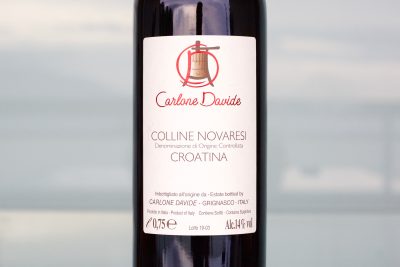
2019 Colline Novaresi, Croatina
$26.00 -
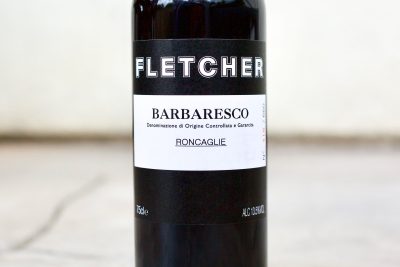
2019 Barbaresco, Roncaglie
$98.00 -
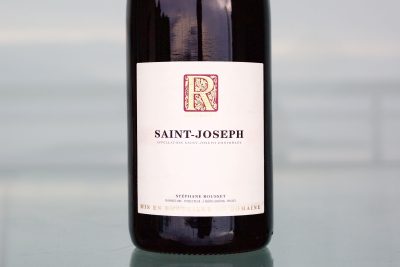
2018 Saint-Joseph Rouge
$39.00 -
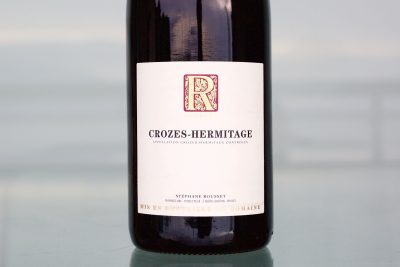
2017 Crozes Hermitage Rouge
$29.00 -
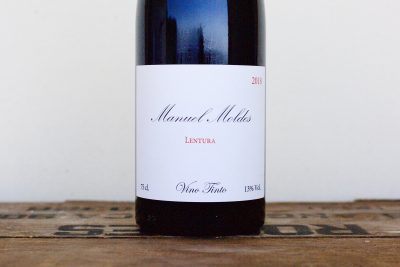
2021 Bierzo Red “Lentura”
$26.00 -
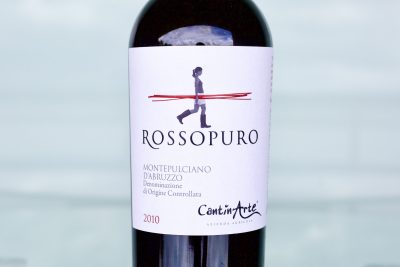
2010 Montepulciano d’Abruzzo, ‘Rossopuro’
$56.00 -
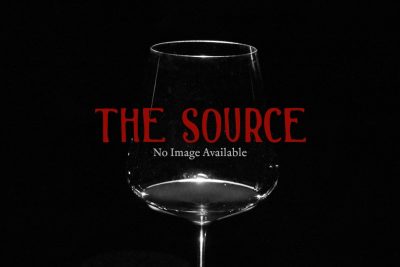
2017 Pommard Rouge, 1er Cru Grands Epenots
$161.00 -
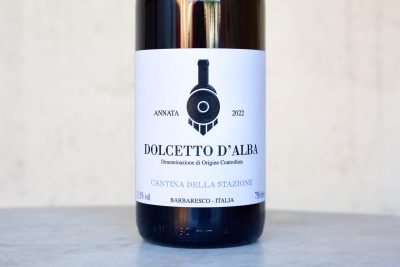
2022 Dolcetto d’Alba
$27.00 -
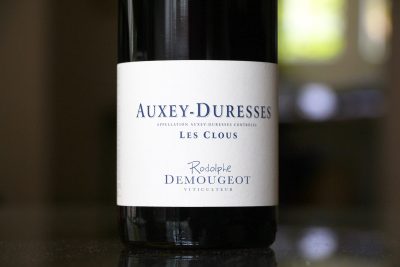
2019 Auxey Duresses, “Les Clous”
$59.00 -
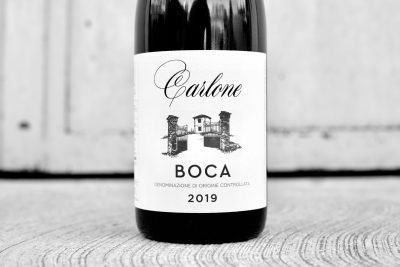
2019 Boca
$53.00 -
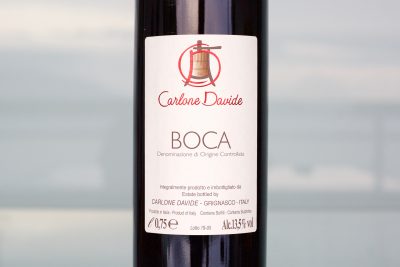
2018 Boca
$50.00 -
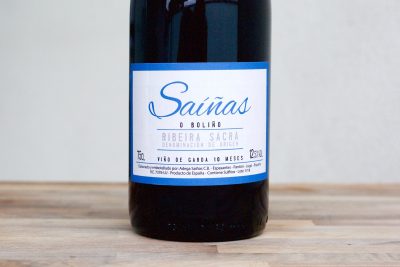
2020 Ribeira Sacra, Saíñas o Bolino, Tinto
$34.00 -
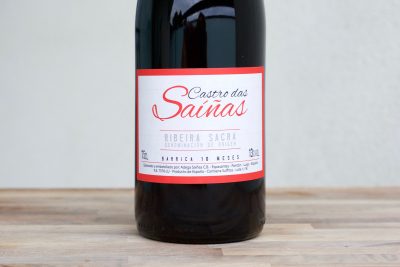
2020 Ribeira Sacra, Castro das Saíñas, Tinto
$27.00 -

2017 Beaune Les Epenotes
$71.00 -

2019 Ribeira Sacra, Castro das Saíñas, Tinto
$26.00 -
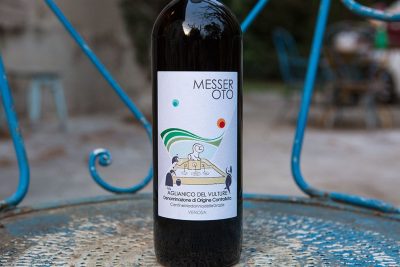
2018 Messer Oto
$23.00

